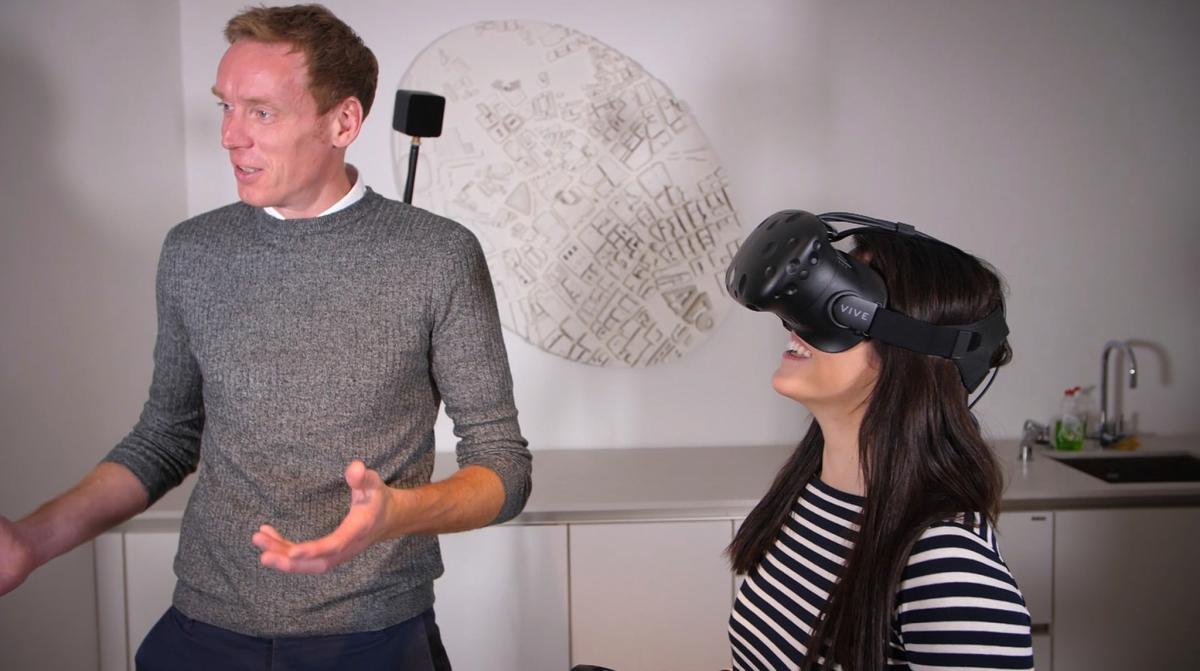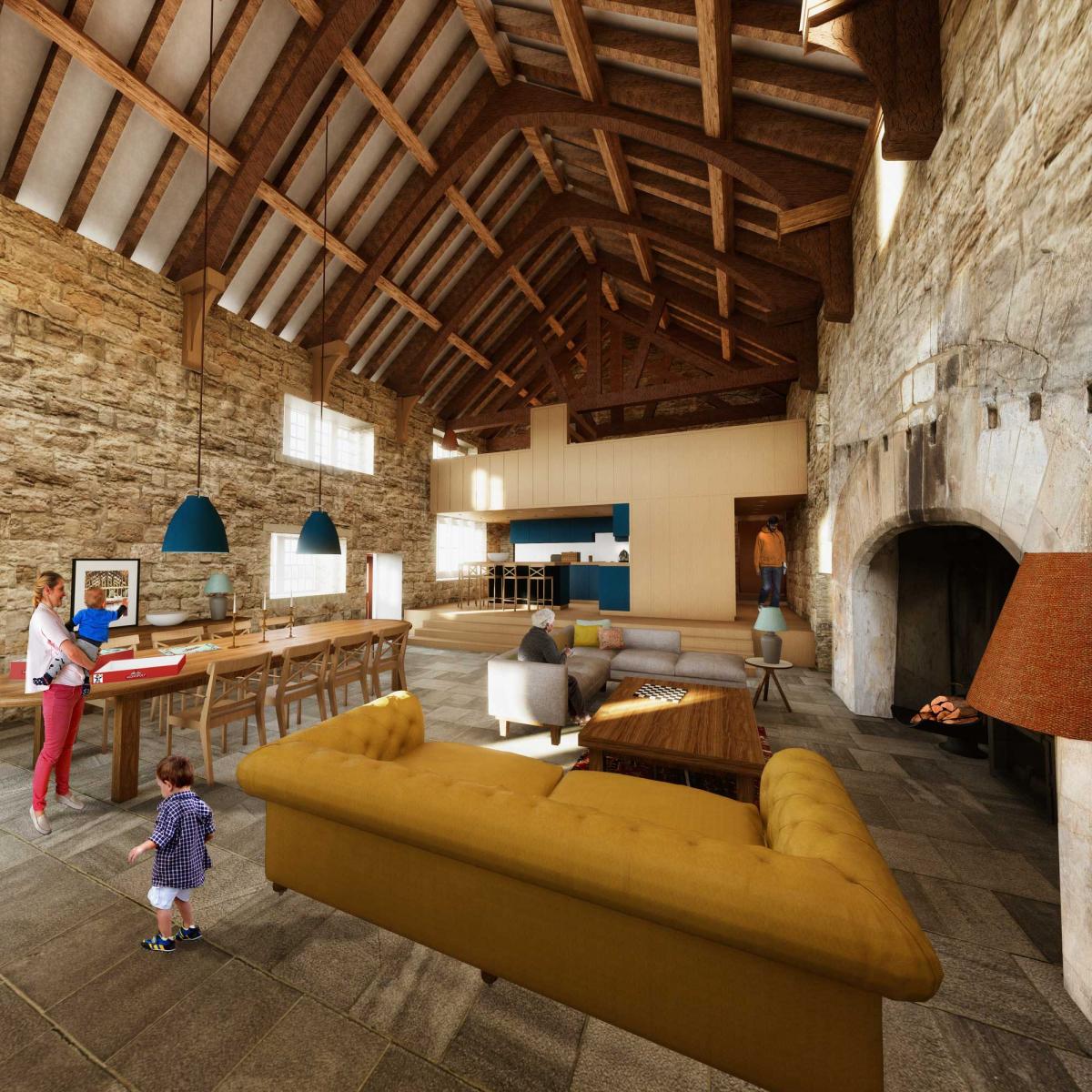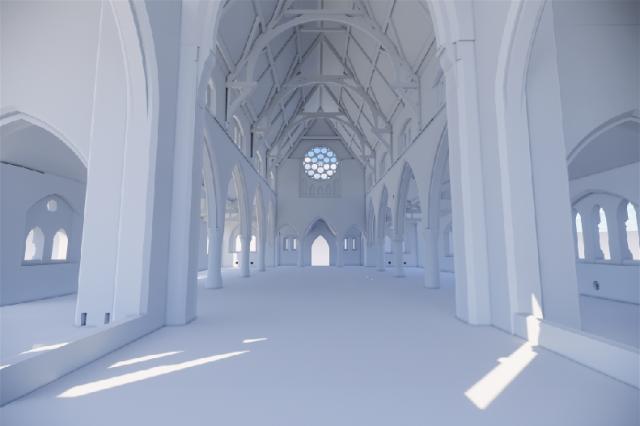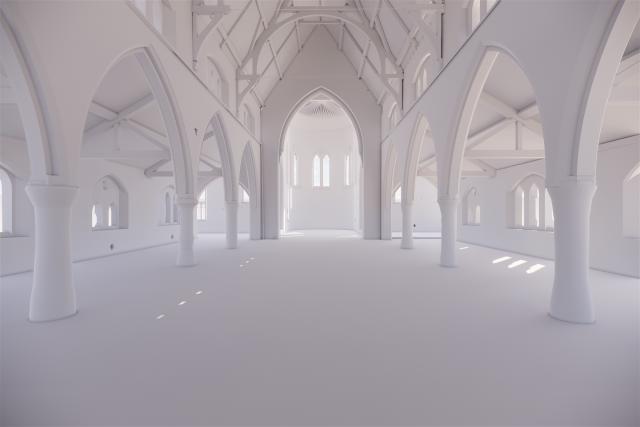VR is adopting an increasingly important role in the design process, giving architects and designers the ability to digitally immerse themselves in proposals and test the design, before a project goes on site. However, beyond the obvious visual benefits, the advantages of using of VR are much wider ranging, as Paul Thornborough, Senior Technologist and BIM Manager explains.

Cost and Efficiency
Managing costs and ensuring that deadlines are met is critical to any building project, and VR can be used as a means of negating potential budgeting and programming issues before they arise.
For example, the technology can be an incredibly powerful tool in communicating design intent and helping avoid miscommunication that could lead to project delays. With VR, users can ‘virtually’ step inside a project and experience the physical scale of different spaces or explore the connection between different parts of the building. Any feedback is then based on an on-site, first person perspective.
The immersive nature of the technology also means that any design issues can be dealt with before they arise. If, after exploring a building, a client wants to make changes elements of the design, these adjustments can be made before building work starts, resulting in fewer delays.
Time and cost savings can also be made thanks to the collaborative working environment VR provides. While working on the new North Wales Command and Custody Centre, for example, the other disciplines’ BIM models, from M&E to structures to furniture and interiors, were loaded onto the architectural model.
During design team meetings, the team then used VR to jump in and out of the model and digitally ‘walk’ around it to see how the project was evolving in real time. This helped avoid miscommunication between different disciplines and the incident of clashes once construction began.

Spatial Awareness
Working with 3D and VR technology gives us the ability to experience spatial awareness in a way that could never be achieved with 2D drawings. Being able to occupy the space allows designer to see in real-time how spatial elements work or how the light changes at various times of the day. This can transform the design process by making it a more intuitive, and one based on human rather than technical responses to a building or space.
Accessibility
Today many smartphones are fitted with built-in gyroscopes giving them the ability to display VR, either as a standalone device or combined with Mobile Head-Mounted Displays (HMDs), such as Google Cardboard. Although the devices don’t allow for movement within the space, they do allow people to view designs at anytime from anywhere, which can be particularly useful during public consultation events.


Communication
Key to most large-scale project is securing the support of stakeholders. However, managing the input of a range of different people is often a challenge. Similarly, most people aren’t trained to understand spatial relationships by simply reading architectural drawings or examining 3D models, which can make it difficult for some to provide workable feedback.
With VR, however, no prior architectural knowledge is required. Users can step inside a project and take a physical reading of the space, which can open lines of communication that aren’t complicated by translating and interpreting technical drawings.
During the development of proposals for the restoration of the fire damaged Church of the Ascension, several VR tours were held in the office to help with engagement and community and stakeholder understanding. The tours allowed the church group, who were driving the restoration, to explore and visualise the new design, and address any concerns as the design developed.
Future Application
VR is evolving at pace and although the extent of its capabilities are yet to be realised, it's likely that the process will become a more collaborative, immersive, and interactive experience.
As a practice, we are committed to being at the forefront of these changes to ensure that we can provide our clients a quality service, supported by the latest in technology.
Paul Thornborough
Paul is responsible for developing and implementing our BIM strategy and capabilities.
